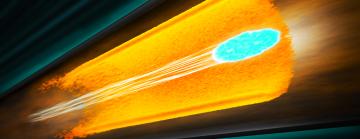About

FACET-II is a National User Facility that provides DOE with the unique capability to develop advanced acceleration and coherent radiation techniques with high-energy electron and positron beams. FACET-II is an opportunity to build on the decades-long experience developed conducting advanced accelerator R&D at the FFTB and FACET and re-deploy HEP infrastructure in continued service of its mission.
FACET, the world’s only multi-GeV facility for advanced accelerator research, operated with the first twenty sectors (2 km) of the SLAC Linac from 2012-2016. It ceased operation in April 2016 to make way for LCLS-II. LCLS-II is the second phase of SLAC’s X-ray laser. It uses the first ten sectors (1 km) of the SLAC Linac. This meant that during 2016 - 2021, FACET needed to be removed in the first 1 km and modifications were needed to allow it to continue its mission in the remaining "middle" kilometer, nestled between LCLS-II and LCLS.
This reconfigution gave us the opportunity to develop and build the next iteration of FACET, bringing new capabilities to the accelerator research community.

FACET-II provides a major upgrade over current FACET capabilities and the breadth of the potential research program makes it truly unique. It will synergistically pursue accelerator science that is vital to the future of both advanced acceleration techniques for High Energy Physics, ultra-high brightness beams for Basic Energy Science, and novel radiation sources for a wide variety of applications. An international group of high energy physicists are interested in using it as a foundation for the world’s first photon collider. Nuclear physicists have proposed using the unprecedentedly high intensity gamma beams to study the structure of nuclei and as a novel particle source for future colliders. No other test facility has attracted such broad interest across so many branches of the Office of Science.
For FACET scientific publications, please see our Publications page. FACET-II will continue this leading research into the next decade. Please see below for FACET-II Science Opportunities identified in our 2015 workshop. The Conceptual and Technical design reports for the FACET-II project are also linked to below and contain studies supporting the capabilities of the future facility.


